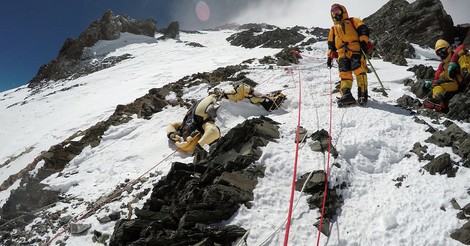Your podcast discovery platform
Curious minds select the most fascinating podcasts from around the world. Discover hand-piqd audio recommendations on your favorite topics.

piqer for: Globalization and politics Global finds
I am an Australian freelance journalist focussing on conflicts, politics, and warzones around the world. I have been working as a journalist for over 5 years, having reported from Australia, Germany, China, Egypt, Palestine, and Ukraine. I am especially interested in the way that new technologies are being used in conflict zones in unexpected and often disturbing ways. During my time working as a journalist, I also co-founded open-source war reporting site Conflict News.
Deliverance From 27,000 Feet
When we talk about what the most dangerous recreational activities on the planet are, the most obvious things which come to mind are vocations like base jumping or motocross. However, there is one activity which is significantly more suicidal and also vastly more expensive
Killing approximately 6.5% of all people who attempt it, and costing in excess of $30,000 per try, climbing Mount Everest remains probably the riskiest peacetime activity a human might attempt. Not only this but as you ascend the mountain, you are forced to walk past the frozen corpses of those who died in the process, grizzly landmarks serving as a constant reminder of the deadly nature of what you are attempting.
The reason it is so dangerous is well-known – within the so-called Death Zone (above 8000m) you are entering an environment where humans cannot survive for long periods of time. Combine this with the freezing temperatures, hostile weather, and the physical exhaustion of the climb, and you have a perfect storm of deadly conditions. But still, the allure of climbing the highest peak on Earth remains.
This novel-like article from the New York Times, entitled 'Deliverance from 27,000 feet', follows the path of one of the more recent tragedies which the mountain has born witness to. Chronicling an ill-fated and under-funded attempt by 4 Indian climbers to reach the summit, it describes in sickening detail the chain of neglect, ambition, bad luck and poor decisions which led both to several deaths, and also to an expensive mission to recover the bodies from within the Death Zone. Throughout it all, it shows the devastating effects of such tragedies on the climbers, their friends and most importantly the families they left behind in search of glory.

Source: Rajneesh Bhandari,Chandrasekhar Bhattacharjee and Arka Dutta. Image: Dawa Finjhok Sher... nytimes.com